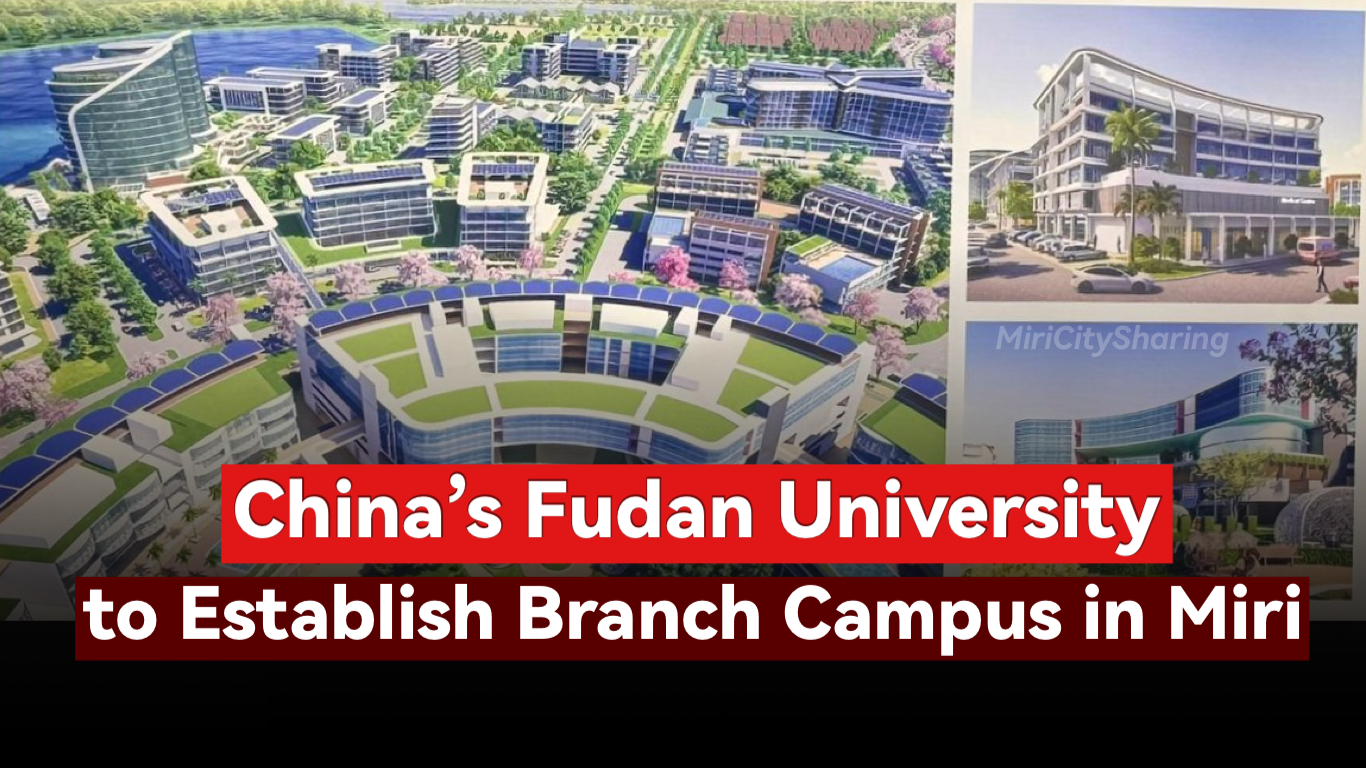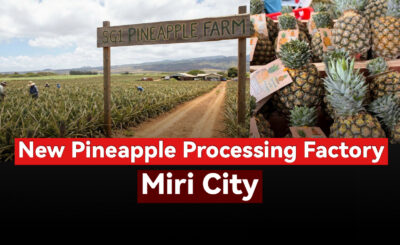Did you know?
One of China’s top universities — Fudan University (复旦大学) — is coming to Miri, Sarawak.
This marks Fudan’s first overseas branch campus in Southeast Asia, strategically located in the heart of Kenyalang Smart City, a major development zone in northern Miri.

⸻
Fudan University – Miri Campus
Project Highlights and Key Details
⸻
Project Information
Name: Fudan University Miri Campus
Affiliation: Fudan University, Shanghai, China
Location: Core area of Kenyalang Smart City, Miri, Sarawak, Malaysia
⸻
Project Background
• Kenyalang Smart City covers about 543 acres, integrating residential, educational, healthcare, commercial, and green technology developments.
• The project is located in northern Miri, near Curtin University Malaysia, and close to the Brunei border.
• In June 2025, Fudan University officially signed an agreement to establish its first Southeast Asian branch campus and Medical Research Center in Miri.
⸻
Development Goals
• Establish the Fudan SEA Institute of Integrative Medicine
• Promote AI-powered healthcare and integrated Chinese-Western medical research
• Build the world’s first Biodiversity Museum
• Set up Fudan Medical School (Miri Campus) to train local medical talent
• Expand into a comprehensive international campus
⸻
Construction Timeline
Signing Date: June 2025
Phase 1 (2025–2026)
• Launch of temporary campus (Old Miri City Council Building and former official residence)
• Establishment of AI Diagnostic Center and Integrative Medicine Institute
Phase 2 (2026–2028)
• Construction of Fudan Medical School (Miri Campus) and Biodiversity Museum
Phase 3 (Post-2028)
• Opening of the permanent campus and student residences
• Expansion of additional academic and research faculties
⸻
Campus Design and Features
• Land Area: Over 100 acres
• Core Functions: Education, Healthcare, and Research
• Main Facilities: Academic blocks, laboratories, international conference center, AI healthcare center, dormitories, and library
• Design Concept: Smart green campus powered by IoT, 5G, and renewable energy
• Campus Vision: Eco-friendly, smart learning, and globally connected environment
⸻
Significance and Impact
1. Education Development
• Introduces world-class Chinese higher education to Sarawak
• Allows local students to access international education without leaving Malaysia
• Cultivates future professionals in medicine and technology
2. Healthcare and Research
• Promotes integrative medicine and AI-driven diagnostics
• Strengthens Sarawak’s medical research capabilities
• Establishes a regional hub for health innovation
3. Economic and Urban Growth
• Stimulates investment and job creation in the Smart City area
• Attracts education, healthcare, and technology enterprises
• Positions Miri as an international city for education and innovation
4. Cultural and International Exchange
• Builds a bridge for China–Malaysia academic collaboration
• Attracts Southeast Asian students to further their studies
• Enhances Sarawak’s global academic reputation
5. Sustainability and Environment
• Adopts energy-efficient and eco-friendly campus design
• Promotes biodiversity conservation and environmental education
• Aligns with Sarawak’s 2030 Sustainable Development Strategy
⸻
Location and Accessibility
• Temporary Campus: Old Miri City Council Building
• Permanent Campus: Core zone of Kenyalang Smart City
• Approximate Distance:
— 10 minutes from Miri City Centre
— 20 minutes from Miri Airport
— Near Curtin University Malaysia
⸻
Summary
The establishment of Fudan University Miri Campus marks a significant milestone in China–Malaysia educational cooperation, positioning Miri as one of the few Southeast Asian cities directly connected with a world-class university.
Once fully operational, the campus will serve as a hub for medical education, technology research, and cultural exchange, driving Miri toward becoming a Smart Education and Health City of the Future.
This is more than an academic project — it is a major step forward for Sarawak’s internationalization, smart growth, and sustainable development.





